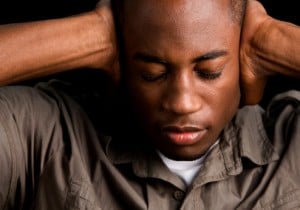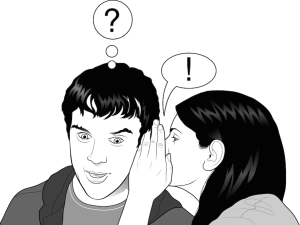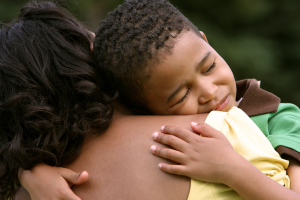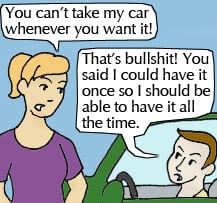
Teacher reading with student.
This article originally appeared on Wear Your Voice and was republished here with the author’s permission.
If you think that race does not have an impact on the way that an educator teaches school children, please come on in and take a seat.
I, a Black student, owe a lot of my academic intelligence to my white teachers over the years, but I know that I have never felt that the expectation for my performance was lower than when I had a white instructor. Oh, the well-meaning microaggressions!
It may have been me; as for my racist ass chemistry teacher, in particular, I am sure it was him. But there are a few things that I wish my white teachers knew.
White teachers: here are 10 things to keep in mind when interacting with and teaching your Black students.
1. It’s not all your fault.
Please do not think that students will learn about slavery and start to view you as a descendant of the overseer. And if they do, this is a great opportunity to share that all white people were not slave owners — some of you just got here.
So since we got it out of the way that slavery was not your fault, can we talk about it, please?
Talk about the subjugation of darker people, the indifference paid to the poor. Let’s talk about the boy who was shot by the police and the mayor covered it up.
Turn your classrooms into petri dishes of opinions and conversations for a child’s mind.
Do not tell them what to think, but challenge them to back up their one-dimensional views with facts and research. Yes, the ones they get from Instagram memes and ear hustling.
2. Words mean things.
Words mean lots of different things. You need to be clear on what you say and how you say it.
A linguistics study was performed by the University of Michigan that examined children who ask “Can I have a piece of cake?” versus children who ask “May I?” The study also showed that the kids who asked if they “can” have a different perception of their abilities and potential for success.
This is juxtaposed to the children who ask “may” to be more submissive and tie their success to the permissiveness of others. Hm, so what does this mean?
Many Black kids, who were taught to ask “may,” fear or respect authority on another level than the white child who thinks in the “cans.” Put that in your toolbox for a rainy day.
3. They yell.
And it is not personal. They were yelled at, they yell to you, they want to be heard.
Everyone yells in Black homes all the time. I have personally never been to a white home to witness this, but I think some of your mommas be yelling too.
I have witnessed the legendary white whooping so please stop thumbing your noses at us.
4. They aren’t here to entertain you.
Please do not ask the children in your class to show you how to nae nae unless you are going to do it with them (Here’s to you, Ron Clark).
There is a lot of bad history surrounding Blacks entertaining white people. Look it up. So since you ain’t Sista Mary Clarence and I ain’t Lauryn Hill, please spare us all the inspirational school year you think you are about to have surrounding song and dance.
Moreover, our children are there to be educated by you, not to entertain you. If you want to brush up on your Black culture, please see the latest Tyler Perry film starring Tyler Perry in about three or more roles.
5. They aren’t like all the other kids.
Do not ever in your life think that you can educate inner city kids with techniques that were not designed for inner city kids.
You are not Hillary Swank, and you cannot write us through our Blackness.
You will fail those kids, and you are a failure as a teacher.
All children are unique all the time. Children may communicate and interact in a way that may be foreign to any way that you were ever treated. And it is not a poor reflection on their environment necessarily, but a reflection on you as a teacher to adapt to students needs.
6. It is important that they like you. Especially because their parents don’t like you.
Following up with what we said before, parents, in general, are supposed to be protective of their young. With racism being everywhere, students may be privy to some pretty racially charged conversations at home.
I grew up with a family where there were four degrees between my parents and they referred to my teachers as “that white teacher.” And you did too.
The damage is in the micro-communication that a white teacher does not care about their young the way a Black teacher will.
There is also an unspoken rule of Black people sticking together. That is why parents will request to move their student to the “Black teachers” homeroom. Or maybe a parent will ask to move the student to the white teacher’s classroom because there is a perception of more structure or hostility. I don’t know!
But I do know that your only defense against that type of thought is to get buy-in from your students, who afterward will defend their white teacher vehemently at home.
7. They need you.
Yes, you are their gatekeeper into whiteness.
The reality is that Black children need to learn to behave in a “white way” in order to avoid being mislabeled as ADHD, pre-juvenile, or some other nonsense.
They need you to show them what the real difference between an inside voice and an outside voice. They need to understand that if you do not always say what you are thinking that you are not being fake, but polite. And they really need to learn how to run shit. And yes, we stay taking notes.
The reality is, many of these children may end up working for a white person one day and need to understand our nuanced differences.
8. Their cousins probably won’t do a damn thing.
This is pretty self-explanatory. Stop being so easily intimidated.
Ain’t no one trying to get shot by the police behind some classroom beef. Probably.
9. They fear somebody or something.
If you cannot win the child over with your shiny hair or deep-sea eyes, you need to find out who is the person they care about the most.
Get their phone number and kiss their ass, so that when you call Granny on them they already know that Granny no longer refers to you as”that white teacher” — you have a name and you have influence.
10. Black is beautiful.
This is the most important. I have seen young Black girls pine over the white aesthetic of their educators and it makes me so upset.
Not because I think white is ugly, but because while they complement their teacher’s hair, skin and blue eyes, they are putting the things that make them so wonderfully black to the side.
For example, I remember combing the hair of a white teacher while she inputs grades in her computer and I would compliment my teacher’s hair. I was obsessed with the color, the texture — everything about it I wanted.
The teacher agreed that her beauty was superior with silence. This is unacceptable.
As a white teacher, especially if you are teaching young Black girls, you need to be ready and versed in natural Black is beautiful.
You need to come back with something like, “I wish I could wear my hair French braided for more than an hour.”
You must come with something to remind these girls that they are beautiful, too!
Because the media forgot, their moms who let them wear blue contacts forgot, and the beauty supply chains who do not carry our true texture forgot, too.
Oh, you didn’t know? I am here to tell you. Know it, understand it, breathe it: If you are going to teach Black kids, know Black is Beautiful.
***
I would like to thank all of the white teachers who teach inner city and disadvantaged Black youth with compassion, honesty, and fidelity despite insufficient pay, crumbling infrastructure, and mediocre materials.
You da shit.
[do_widget id=’text-101′]
Joy Mohammed is a Nigerian-African American school counselor who lives in Detroit, Michigan, with her two children.In her non-existent free time, she travels with her family, raises scholarship money for Detroit youth, does African Dance, and writes. Find her on Instagram: @pluswithminuslifestyle.
Search our 3000+ articles!
Read our articles about:
Our online racial justice training
Used by hundreds of universities, non-profits, and businesses.
Click to learn more
Most Read Articles
- « Previous
- 1
- …
- 30
- 31
- 32



















